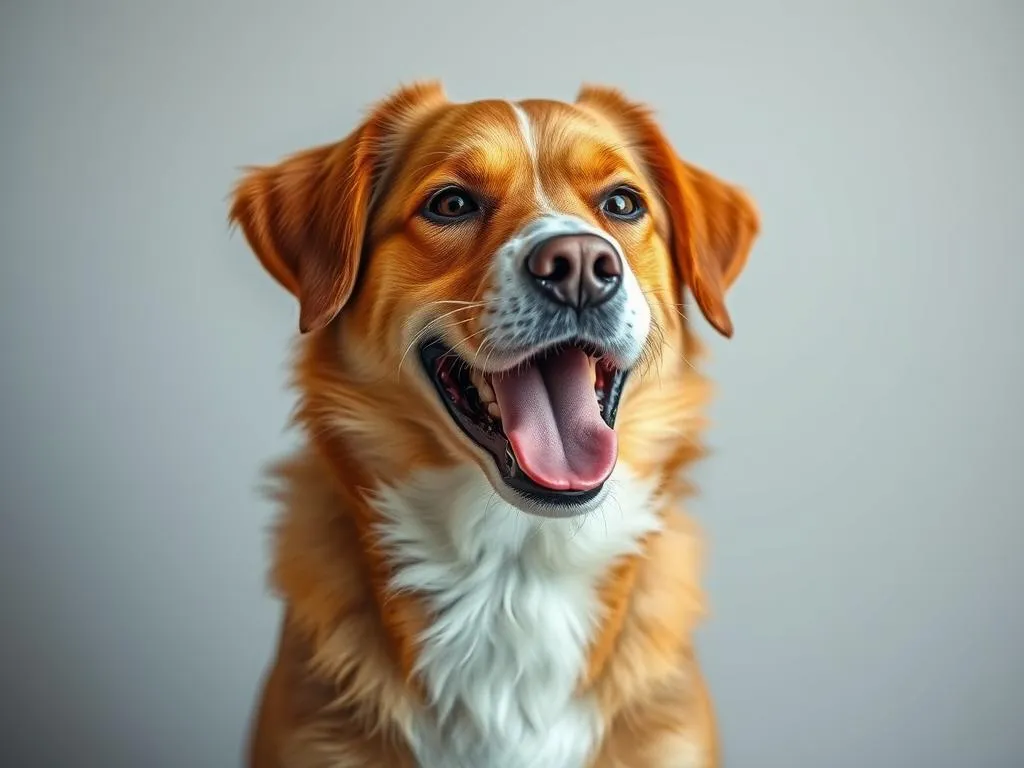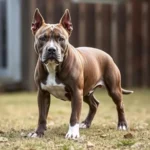
Introduction
Dealing with a hyper dog can be both challenging and exhausting. If your furry friend is constantly bouncing off the walls, it can lead to frustration for both you and your pet. A hyperactive dog often exhibits behaviors that can be disruptive, making it difficult to enjoy the companionship of your canine buddy. Understanding how to calm a hyper dog is essential not only for your peace of mind but also for your dog’s well-being.
Calming your dog can lead to a more harmonious home environment, improved behavior, and a stronger bond between you and your pet. In this article, we will explore effective strategies and tips for managing hyperactivity in dogs. With patience and the right techniques, you can help your dog find a sense of calm.
Understanding Hyperactivity in Dogs
What Causes Hyperactivity?
Hyperactivity in dogs can stem from various factors. Recognizing these can help you address the issue more effectively.
-
Genetic Factors: Some breeds are naturally more energetic and may require more activity than others. For instance, herding breeds like Border Collies are known for their high energy levels.
-
Environmental Influences: A chaotic home environment or lack of structure can contribute to hyperactivity. Dogs thrive in settings where they feel secure and can predict their routines.
-
Lack of Exercise or Mental Stimulation: Dogs need both physical and mental engagement. Without adequate exercise, energy can build up, leading to hyperactive behaviors.
Signs of Hyperactivity
Recognizing the signs of hyperactivity is crucial for addressing the behavior effectively. Some common indicators include:
-
Excessive Barking: If your dog barks excessively, it may be a sign of pent-up energy.
-
Jumping and Running: Hyper dogs often jump on people and run around incessantly, making it difficult to control their behavior.
-
Inability to Settle Down: If your dog struggles to relax or frequently shifts from one activity to another, this could indicate hyperactivity.
Different Types of Hyperactivity
Understanding the type of hyperactivity your dog displays can help you tailor your approach:
-
Puppy Energy vs. Adult Hyperactivity: Puppies are naturally energetic, and their hyperactivity often decreases as they mature. However, adult dogs can also exhibit hyperactive behaviors due to lack of training or exercise.
-
Hyperactivity from Anxiety or Fear: Some dogs may behave hyperactively due to stress or anxiety. This type of hyperactivity often requires different strategies for calming.
Assessing Your Dog’s Energy Levels
Daily Exercise Requirements
Every dog has unique exercise needs based on their breed, age, and health status. It’s essential to determine how much physical activity your dog requires to manage their energy levels effectively.
-
Breed-Specific Exercise Needs: High-energy breeds generally require more exercise than lower-energy breeds. Research the specific needs of your dog’s breed to develop an appropriate exercise routine.
-
Age-Related Considerations: Puppies typically need more frequent, shorter bursts of activity, while adult dogs may require longer, more sustained exercise sessions. Older dogs often need gentler activities.
Observing Behavior Patterns
Monitoring your dog’s behavior can provide insight into their hyperactivity triggers.
-
Noting Times of Day When Hyperactivity Peaks: Many dogs have specific times when they are more energetic, often coinciding with their feeding schedule or when their owners return home.
-
Identifying Triggers: Pay attention to what situations lead to hyperactivity. Common triggers may include visitors, loud noises, or changes in routine.
Techniques to Calm a Hyper Dog
Regular Exercise Routines
One of the most effective ways to manage hyperactivity is through regular exercise. Physical activity helps your dog expend excess energy and can lead to a calmer demeanor.
-
Importance of Physical Activity: Regular exercise not only helps reduce hyperactive behavior but also promotes overall health and well-being.
-
Recommended Activities: Engage your dog in activities such as:
- Walking: Daily walks are essential for most dogs. Consider varying the route to keep things interesting.
- Running: If your dog enjoys running, consider bringing them along on your jogs.
- Playing Fetch: A game of fetch is a great way to burn off energy. Use toys or balls that your dog enjoys.
Mental Stimulation Strategies
In addition to physical exercise, mental stimulation is crucial for a well-rounded approach to calming a hyper dog.
-
Interactive Toys and Puzzles: Toys that require problem-solving can keep your dog engaged and mentally stimulated, reducing hyperactive behavior.
-
Training Exercises as Mental Workouts: Incorporate training sessions into your daily routine. Teaching new commands or tricks can be a fun way to stimulate your dog mentally.
Training for Calmness
Training your dog to respond to basic commands can significantly improve their ability to settle down.
-
Basic Commands: Teach commands such as sit, stay, and down. These commands help establish control and provide your dog with a sense of structure.
-
Positive Reinforcement Techniques: Use treats and praise to reinforce calm behavior. Rewarding your dog when they exhibit calmness can encourage them to repeat the behavior.
Creating a Calm Environment
Establishing a peaceful environment can also help your dog feel more relaxed.
-
Setting Up a Designated Quiet Space: Create a comfortable area in your home where your dog can retreat to when they need to calm down. This space should include their bed, toys, and water.
-
Using Calming Music or Pheromone Diffusers: Consider using calming music or pheromone diffusers designed for dogs. These can create a soothing atmosphere and help reduce anxiety.
Professional Help and Resources
When to Seek Professional Training
If you find that self-training isn’t yielding the results you desire, it may be time to seek professional help.
-
Indicators That Self-Training Isn’t Effective: If your dog’s hyperactivity persists despite your efforts, or if they display aggressive behaviors, professional guidance may be necessary.
-
Types of Professional Trainers: Look for obedience trainers or behaviorists who specialize in hyperactive dogs. They can provide tailored strategies and support.
Recommended Training Classes
Training classes can offer valuable structure and socialization opportunities for your dog.
-
Group Classes vs. Private Sessions: Group classes are a great way for your dog to learn in a social setting, while private sessions can provide more personalized attention.
-
Online Resources and Programs: If in-person training isn’t an option, consider online training programs that focus on calming techniques and obedience.
Useful Books and Guides
Reading and educating yourself can enhance your understanding of dog behavior and training.
- List of Recommended Reading Material for Dog Owners: Look for books that specialize in dog training and behavior management. Reading can provide additional strategies and insights.
Additional Tips and Tricks
Consistency is Key
Establishing a consistent routine is vital for managing your dog’s hyperactivity.
-
Importance of Establishing Routines: Dogs thrive on predictability. Consistent feeding, exercise, and training schedules can help your dog feel secure.
-
Family Involvement in Training: Ensure that all family members are on the same page regarding training techniques and routines. Consistency from everyone will reinforce the desired behaviors.
Patience and Understanding
Training a hyper dog takes time and understanding.
-
Acknowledging Progress Takes Time: Celebrate small victories and understand that progress may be slow. Every step forward is a step in the right direction.
-
Avoiding Frustration and Punitive Measures: Frustration can lead to negative interactions. Focus on positive reinforcement rather than punishment, which can exacerbate anxiety.
Conclusion
Calming a hyper dog may seem daunting, but with the right strategies and a commitment to training, it is entirely possible. By understanding your dog’s needs, providing ample exercise and mental stimulation, and fostering a calm environment, you can help your dog become more relaxed and well-behaved.
Remember to implement these practices gradually and to be patient with your dog’s progress. The rewards of having a calm dog are immense, leading to a more enjoyable and fulfilling relationship.
Frequently Asked Questions (FAQs)
How long does it take to calm a hyper dog?
The time it takes to calm a hyper dog varies based on the individual dog and the strategies implemented. Consistency and patience are essential; some dogs may show improvement in a few weeks, while others may take several months.
Are certain breeds more prone to hyperactivity?
Yes, certain breeds are more predisposed to hyperactivity, especially working and herding breeds. Understanding your dog’s breed traits can help you tailor exercise and training to their needs.
What are some signs that my dog is becoming calmer?
Signs of a calmer dog may include reduced barking, the ability to settle down without constant movement, and a willingness to engage in quiet activities like cuddling or napping.
Can diet affect my dog’s energy levels?
Yes, diet can play a significant role in your dog’s energy levels. Ensure your dog is on a balanced diet appropriate for their age, breed, and activity level, as this can impact their overall behavior and energy.









